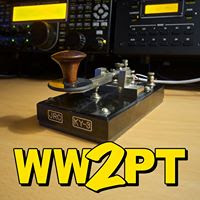Venus-Jupiter Conjunction, Porta Mount Shakedown, Mars
I caught the Venus-Jupiter conjunction on the drive home. I saw Venus first while heading west on the Thruway above the Ramapo mountains, Jupiter a bit later while driving on the back roads into Greenwood Lake. The pair was framed beautifully over Long Pond, another missed photo op.
Linda and I stopped at the entrance of Wawayanda State Park just before Venus dipped below the mountain.
[ Memo to self: Next time there's an astronomical event, DON'T FORGET THE FUCKING BINOCS. ]
The following graphic was clipped from Starry Night Pro 5 (82.5 au from Sun).

Sky & Telescope article: Venus and Jupiter Kiss in Twilight
Once home, after the Yankees lost to Seattle, I put the Porta out back with the TV85. It's super easy to mount the scope, and the tripod seems pretty stable. I struggled once again with Starbeam alignment. Someone on the TeleVue Yahoo Group asked for my opinion of the thing, and I think I talked him out of it. Maybe it's because I'm going blind but I can't use the flip mirror on any but the brightest objects. And I really don't like the complex alignment procedure - the screws used to adjust the unit's pitch are in the path of the red-dot beam, so when I'm turning it I can't see the dot. Very tricky. If it was a set-and-forget thing like the Telrad it would be OK, but realignment needs to be done every time I use it - it seems to get knocked out of whack whenever I put the scope in the case. I finally got the job done by aligning on a light from a house across the lake. It's damn near impossible to do at higher power with a non-tracking mount.
First light for the mount (if a mount can have a first light) was Albireo, for no other reason than it was bright and placed well enough to let me find it with the Starbeam without doing a Monica.
Using the fork arm to move in azimuth, it is a little tight but smooth. Movements in altitude must be done by grabbing the scope tube or getting a grip on the dovetail block and twisting. Some sort of fixed pointing handle a la Tele Pod might be useful. The scope needs to be balanced fairly well to keep the tail from dipping. The fine motion controls are awesome, at least down to 8mm (75x).
I swept around the star clouds near Deneb with the 42mm LVW. Everything in the outer third of the FOV looked distorted. Tried it again later on M31 and it wasn't so bad. I think my eyes are fucked. The 42mm LVW may end up on eBay while I look for a TV 35mm or 41mm Panoptic.
Mars rises past the trees a bit after 1am. This is my first look at Mars with glass this time around. Not much to see at 75x; at 150x, I could see that the disc was waxing gibbous, but no surface detail. Angular size is now 14 arcsecs.; it will continue to grow and reach 20 arcsecs. for almost an entire month from Oct. 16 to Nov. 12. Mars will be at its closest to Earth on Oct. 30.
Mars drifts pretty fast at 150x, but kept in the FOV by easily twisting the fine controls. Focusing was difficult, deck shake severe. This must end - I need to clean out the corner by the bedroom window and start setting up on solid ground. I packed it in at 0145
The Porta gets a big thumbs-up first time out. I really like this mount! The Tele Pod was such a bear to maneuver - couldn't move it in alt when unless the tension screws were loose, couldn't take your hands off unless the tension screws were tight, couldn't tighten the tension screws without moving the scope -so even at low power, keeping objects centered over time required way more work than anyone should do without getting paid. Porta, on the other hand, is so easy to point and track it makes me giddy. Considering the very small price difference between the two mounts, I can't imagine why anyone would opt for the Tele Pod.








<< Home